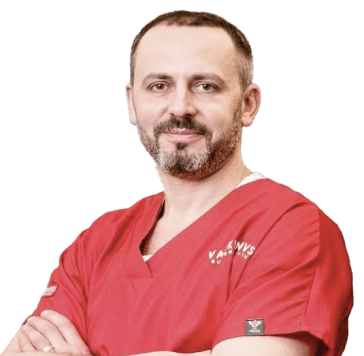


The need for facial surgery, which involves the surgical treatment of injuries or defects in the facial region of the head and neck, arises in various situations. These include cases of injuries resulting in fractures or cracks, congenital defects, inflammatory pathological conditions, and neoplasms such as thyroid cancer and nasopharyngeal cancer. Additionally, facial surgery is employed to address complex issues and other related problems.
Facial surgery is typically conducted using specialized tools and technologies, including computed tomography, magnetic resonance imaging, and other radiological methods. These techniques enable the surgeon to precisely assess the scope of damage and the location of the pathology. Microscopic and endoscopic surgeries enable surgeons to operate with minimal disruption to surrounding tissues.
During head and neck cancer surgery, surgeons employ a range of techniques to extract tumors situated in the head and neck region. These methods encompass radical extirpation, entailing the complete removal of all discernible tumor traces, and resection, which involves the partial removal of the tumor to diminish its size and facilitate subsequent treatment. Supplementary procedures, including radiotherapy and chemotherapy, may be integrated into head and neck cancer surgery to furnish additional treatment and mitigate the likelihood of tumor recurrence. The realm of head and neck oncology surgery proves to be an effective approach for addressing head and neck tumors, allowing patients to resume their normal lives following the procedure.




Craniofacial Pathology:
1) Eye Pathology:
1. Eversion of the lower eyelid (ectropion).
2. Retraction of the eyelid (high position of the upper eyelid or low position of the lower eyelid).
3. Lacrimal duct patency issues:
- Lacrimal or tear lake.
- Lacrimal or tear stream.
- Lacrimal or tear tubules.
- Lacrimal points and the beginning of lacrimal tubules.
- Nasolacrimal duct.
2) Orbital injuries (affecting eyeballs).
3) Salivary gland diseases:
- Non-neoplastic conditions (sialosis, sialoadenitis – inflammation).
- Tumorous conditions (adenoma).
4) Neoplasms in the head and neck area:
Benign cellular growths:
- Lipodermoid (dermolipoma, lipoma - benign formations from adipose tissue within capsules).
- Osteomas (derived from bone tissue).
Vascular growths:
- Hemangioma (from cells of the inner layer of vessels).
- Angioma (from blood vessels).
- Lymphangioma (from lymphatic vessels and spaces)
Cysts (formations with a capsule filled with mucus, dead cells):
- Epidermoid (from the surface layer of the skin).
- Dermoid (from the surface and deeper layers of the skin, hair follicles, sebaceous glands).
Precancerous conditions of the facial skin and mucous membrane of the lips.
5) Purulent-inflammatory processes in the head and neck area:
- Abscess.
- Phlegmon.
6) Head and neck fistula (pathological channels connecting hollow organs to each other or to the body’s surface).
7) Congenital malformations of the head and neck area:
- Auricle appendages (growths, tubercles near the auricle).
- Vascular malformations (formations from vessels).
8) Thermal injuries of the head and neck (burns and their consequences).
9) Diseases and damage to nerves of the maxillofacial area:
- Neuralgia (pain in the area of a nerve).
- Neuritis of the trigeminal nerve (inflammation).
- Neuritis of the facial nerve (inflammation).
10) Bone defects of the head and neck.
11) Post-traumatic deformation of the face (after an injury).
12) Eagle Syndrome (also known as Styloid Syndrome – lengthening of the styloid process of the temporal bone).
These manifestations can occur in various locations:
1) On the surface:
- Infraorbital space.
- Frontal area.
- Orbital zone (eye sockets).
- Paraorbital zone (around the eye sockets).
- Temporal fossa.
- Subtemporal fossa.
- Pterygoid fossa (Bish's fossa).
- Hard and soft palate.
- Chin area.
- Cheek area.
- Submandibular fossa.
- Pterygoid-maxillary space.
- Peripharyngeal space.
1) Inside the bones:
- Front wall of the frontal sinus.
- Orbit walls.
- Frontal complex.
- Lower jaw (mandible).
- Angle and body of the lower jaw.
- Condylar process of the lower jaw.
- Articular head of the lower jaw.
- Temporomandibular joint.
Maxillofacial Pathology:
- Atypical tooth locations.
- Knocked-out teeth.
- Periostitis (inflammation of the periosteum – the surface layer of bones).
- Jaw cyst.
- Sequestra (fragments of dead tissue).
- Neoplasms of the oral cavity or the skin surface.
- Dislocation of the lower jaw.
- Jaw fractures.
- Fistula of the upper jaw.
- Benign neoplasms of the jaws (odontoma – from the main tissue of the tooth, cementoma – from the cementum of the tooth).
- Stone in the duct of the submandibular salivary gland.
- Stone in the submandibular salivary gland.
- Osteogenic tumors and tumor-like formations of the jaws.
- Connective tissue tumors of the jaws.
- Vascular tumors of the jaws.
- Bish's lumps.
- Neoplasms of the oral cavity.
- Retained (out-of-position) tooth in the jaw.
- Retained wisdom tooth in the upper jaw.
- Retained wisdom tooth in the lower jaw.
- Dislocated (incorrectly located) wisdom tooth.
- Orthodontic conditions requiring correction.
- Retention cyst of the sublingual salivary gland.
- Retention cyst of small salivary glands.
- Dislocation of the lower jaw.
- Disruption of the integrity of the facial complex.
- Bilateral cleft of the alveolar process in the upper jaw.
- Unilateral cleft of the alveolar process in the upper jaw.
- Congenital cleft of the soft and partially hard palate.
- Connection between the oral cavity and maxillary sinus (oro-antral connection).
- Tongue frenulum pathology.
- Lip frenulum pathology.
- Surface abscess or phlegmon in the maxillofacial area.
- Furuncle or inflamed atheroma on the face.
- Palate defects and deformations.
- Bite and profile irregularities.
- Sinusitis caused by tooth inflammation.
- Difficulty in the eruption of wisdom teeth.
- Inflammatory diseases of the soft facial tissues due to tooth inflammation.
- Tooth loss, necessitating complete implantation.
- Peri-implantitis.
- Gum recession (receding gum line, exposure of teeth).
Oncosurgery of the face and neck can effectively address a range of issues, including:
- Tumors of the oral cavity.
- Neoplasm in the neck area.
- Neoplasms of connective and other soft tissues of the head, face, and neck.
- Carcinoma in the neck and head area (a tumor originating from the deepest skin layer).
- Chemodectoma (a tumor originating from hormone-secreting tissues responsive to changes in oxygen and carbon dioxide concentration in blood).
- Neoplasms of connective and other soft tissues of the face.
- Tumors of the submandibular salivary gland.
- Neoplasms of connective and other soft tissues of the neck.
- Jaw tumors.
- Hemolymphangioma of the face (a mixed vascular neoplasm containing both blood and lymphatic vessels).
- Jaw myxoma (a benign tumor originating from bone cells).
- Papilloma of the mucous membrane of the oral cavity and lips (a tumor from surface skin layers).
- Malignant neoplasm of salivary glands.
- Metastases in the neck area (fragments of tumors from other locations).
- Carcinoma of the nasopharynx.
- Lymphoepithelioma of the nasopharynx (Schminke tumor, originating from the surface mucous membrane layer, often located around the tonsils).
- Teratoma of the head and neck (a congenital tumor from embryonic tissues due to disrupted development).
- Adenocarcinoma of the head and neck (tumor originating from integumentary and glandular cells).
- Squamous cell carcinoma of the tonsils.
- Glottic, subglottic, and supraglottic cancer (located respectively in the larynx, below it, and above it).
- Adenoid cystic carcinoma (cancer forming cysts).
- Mucoepidermoid carcinoma (which secretes mucus and keratin).
- Melanoma of the upper respiratory tract (tumor originating from melanocytes, dark pigment-containing cells).
- Lymphoma of the upper respiratory tract (tumor originating from hematopoietic tissue).

If needed, our doctors provide consultations not only in Ukraine but also worldwide, both at our clinic in Kyiv and online through prior appointments. Comprehensive diagnostics, treatment, and prevention are offered.
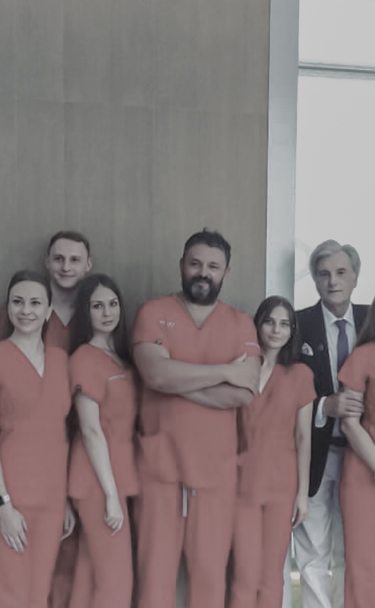
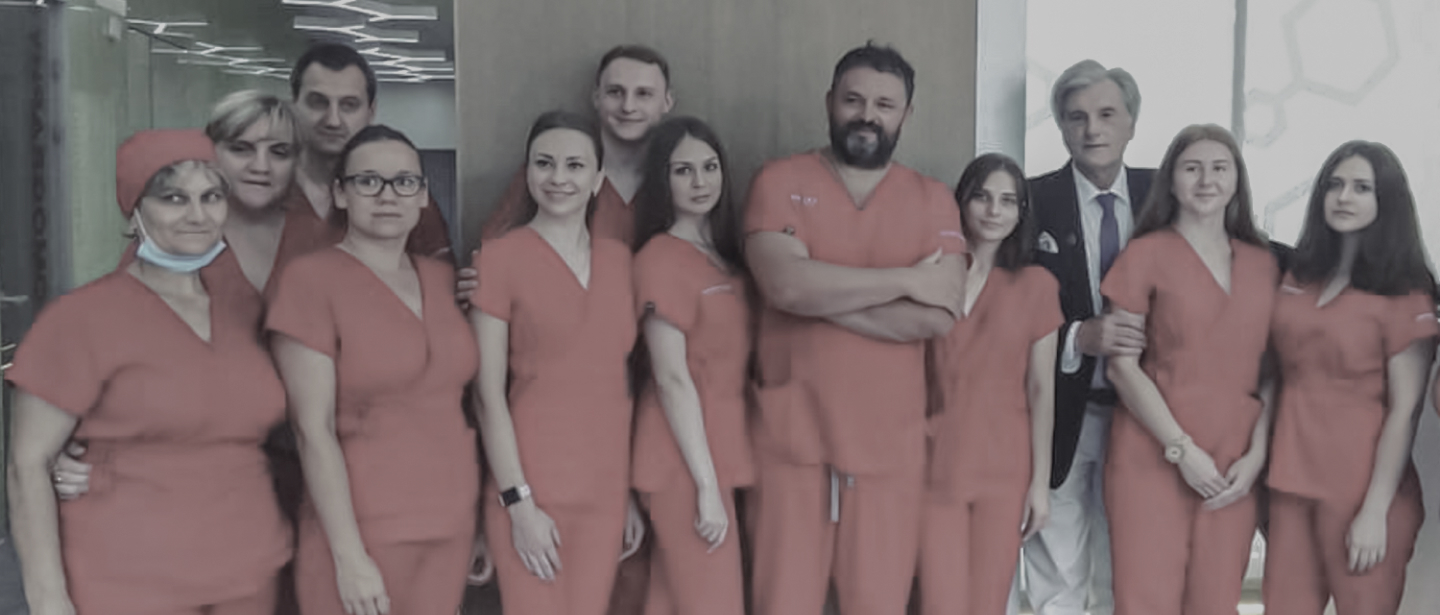
Years of experience
Patients
A modern clinic in the center
Successful operations
Unique surgical techniques
Branch of surgery
Units of the latest equipment
Charitable surgical assistance
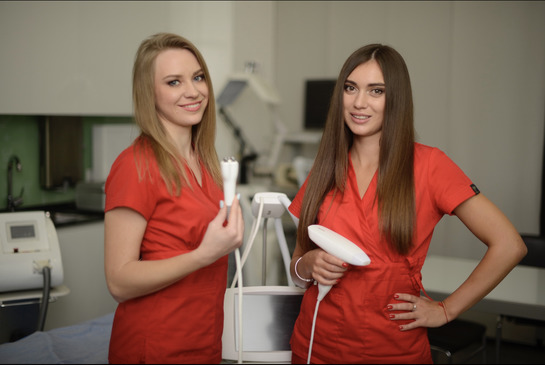
You should promptly consult a craniofacial or maxillofacial oncosurgeon if you experience the following symptoms:



A surgeon's consultation involves:


Questioning and assessment of medical history and complaints.
Thorough external clinical examination, including changes areas, local lymph nodes, and organ systems.
Laboratory tests, including general clinical tests and specific tumor marker assessments to evaluate the likelihood of tumor development.
Instrumental examinations, such as X-ray (CT), magnetic resonance imaging (MRI), positron emission (PET) tomography, to assess the body's overall condition and specific affected areas.
Biopsy of altered tissues to determine the exact nature of the neoplasm and plan appropriate treatment.
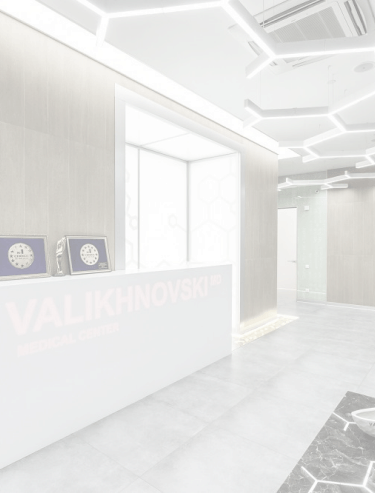






Maxillofacial surgeries include a variety of procedures such as:
– Atypical tooth extraction.
– Smoothing the edges of the tooth socket (alveolectomy).
– Tooth-preserving operations (hemisection, root amputation, coronary-radicular separation).
– Tooth replantation.
– Bougieurage of the nasolacrimal canal.
– Removal of dermoid cysts.
– Removal of lipodermoids (dermolipomas).
– Removal of lateral neck cysts.
– Removal of middle neck cysts.
– Removal of auricle appendages.
– Plastic closure of head and neck fistulas.
– Removal of eyelid neoplasms.
– Removal of vascular malformations in the paraorbital zone.
– Removal of benign neoplasms in the paraorbital zone.
– Opening of abscesses in the paraorbital zone.
– Opening and drainage of abscesses and phlegmons in various facial spaces.
– Correction of lower eyelid eversion.
– Orbital decompression.
– Correction of complex eyelid retractions (with cartilage autotransplantation).
– Correction of eyelid retractions.
– Tear duct drainage.
– Orbital wall reconstruction after injury.
– Open reposition and fixation using metal osteosynthesis for fractures of the upper jaw.
– Open reposition and fixation using metal osteosynthesis for fractures of the lower jaw in the angle and body areas.
– Open reposition and fixation using metal osteosynthesis for condylar process fractures of the lower jaw.
– Open reposition and fixation of the facial complex.
– Open reposition and osteosynthesis in the area of the articular head.
– Reconstruction of the head of the temporomandibular joint.
– Reconstruction of facial skeleton bones.
– Repositioning and fixation using metal osteosynthesis for the frontal sinus wall.
– Orbit wall reconstruction with customized implants.
– Surgical treatment of thermal injuries to the head and neck.
– Surgical treatment of temporomandibular joint disorders.
– Surgical treatment of nerve-related diseases and damages in the maxillofacial area (neuralgia, trigeminal neuritis, facial neuritis).
– Treatment of precancerous skin conditions on the face and lip mucous membrane.
– Treatment of congenital defects and skin tumors.
– Surgical treatment of adipose tissue tumors and tumor-like formations.
– Fabric expander installation.
– Endoprosthesis of facial areas.
– Endoprosthesis of the angles of the lower jaw.
– Endoprosthesis of the chin.
– Bone autografting from the tibia, iliac bone, and skull vault.
– Fascial autograft collection.
– Cartilaginous ear autograft collection.
– Cartilaginous rib autograft collection.
– Chin augmentation by osteotomy.
– Chin reduction by osteotomy.
– Canthopexy.
– Resection of the upper jaw.
– Resection of the lower jaw.
– Resection of the lower jaw with immediate reconstruction.
– Resection of the alveolar process.
– Replacement of bone defects in the head and neck area with customized implants.
– Orthognathic surgery.
– Cystectomy of head and neck cysts.
– Treatment of non-neoplastic salivary gland diseases.
– Parotidectomy for large salivary gland adenomas.
– Surgical treatment of post-traumatic facial deformations.
– Treatment of sialodenitis.
– Treatment of sialosis.
– Replacement of lower jaw defects with titanium implants.
– Placement of titanium implants in the temporomandibular joint area.
– Placement of combined implants (titanium, peek) in the temporomandibular joint area.
– Treatment of Eagle syndrome.
Craniofacial Surgeries:
– Surgical treatment of periostitis (periostomy).
– Jaw cyst removal.
– Sequestration removal (sequestrectomy).
– Removal of oral cavity or skin surface neoplasms.
– Closed repositioning of the lower jaw.
– Jaw splinting using IMF screws.
– Plastic and closure of upper jaw fistulas.
– Removal of benign neoplasms of the jaws (odontoma, cementoma).
– Removal of submandibular salivary gland duct stones.
– Removal of submandibular salivary gland stones (together with the gland).
– Treatment of osteogenic tumors and tumor-like formations in the jaws.
– Treatment of connective tissue tumors in the jaws.
– Treatment of vascular tumors in the jaws.
– Removal of Bish’s lumps.
– Removal of oral cavity neoplasms.
– Removal of retained (out-of-place) tooth in the jaws.
– Removal of retained wisdom teeth in the upper and lower jaws.
– Removal of dystopian (incorrectly positioned) wisdom teeth.
– Tooth extraction for orthodontic reasons.
– Gentle maxillary sinus surgery.
– Removal of retention cyst of the sublingual salivary gland.
– Removal of retention cysts of minor salivary glands.
– Reduction of lower jaw dislocations.
– Closed repositioning of the cheek complex without fixation.
– Bone plastic surgery for bilateral cleft alveolar ridge of the upper jaw.
– Bone plastic surgery for unilateral cleft alveolar ridge of the upper jaw.
– Plastic surgery for congenital cleft of the soft and partially hard palate.
– Necroectomy of the jaw
Dental Implant Procedures:
– Installation of a gum former
– Installation of an abutment
– Installation of a mini implant
– Removal of a failing implant
– Treatment of peri-implantitis
– Bone block transplantation
– Zygomatic tooth implantation (Zygoma)
– Implantation using a navigation template (minimally invasive)
– Lengthening of the crown part of the tooth
– Bone augmentation
– Vestibuloplasty
– Plasma lifting
– Open sinus lifting
– Closed sinus lifting
– Bone grafting of the alveolar process of the jaw
– Autograft taken from the chin
– Autograft taken from the mental part of the jaw
– Autograft taken from the branch of the lower jaw
– Mucogingival surgery
– Treatment of gum recession
Oncosurgery of the Face and Neck:
– Surgical treatment of periostitis (periostomy).
– Jaw cyst removal.
– Sequestration removal (sequestrectomy).
– Removal of oral cavity or skin surface neoplasms.
– Closed repositioning of the lower jaw.
– Jaw splinting using IMF screws.
– Plastic and closure of upper jaw fistulas.
– Removal of benign neoplasms of the jaws (odontoma, cementoma).
– Removal of submandibular salivary gland duct stones.
– Removal of submandibular salivary gland stones (together with the gland).
– Treatment of osteogenic tumors and tumor-like formations in the jaws.
– Treatment of connective tissue tumors in the jaws.
– Treatment of vascular tumors in the jaws.
– Removal of Bish’s lumps.
– Removal of oral cavity neoplasms.
– Removal of retained (out-of-place) tooth in the jaws.
– Removal of retained wisdom teeth in the upper and lower jaws.
– Removal of dystopian (incorrectly positioned) wisdom teeth.
– Tooth extraction for orthodontic reasons.
– Gentle maxillary sinus surgery.
– Removal of retention cyst of the sublingual salivary gland.
– Removal of retention cysts of minor salivary glands.
– Reduction of lower jaw dislocations.
– Closed repositioning of the cheek complex without fixation.
– Bone plastic surgery for bilateral cleft alveolar ridge of the upper jaw.
– Bone plastic surgery for unilateral cleft alveolar ridge of the upper jaw.
– Plastic surgery for congenital cleft of the soft and partially hard palate.
– Necroectomy of the jaw
Surgical Procedures and Preparation:
– Laryngopharyngectomy with Flap Reconstruction: Removal of the larynx and pharynx with subsequent restoration using own tissue flaps.
– Surgical Treatment of Nasopharyngeal Carcinoma
– Surgical Treatment of Nasopharyngeal Lymphoepithelioma
– Surgical Treatment of Head and Neck Teratoma
– Surgical Treatment of Head and Neck Adenocarcinoma
– Surgical Treatment of Squamous Cell Tonsil Cancer
– Surgical Treatment of Glottic, Subglottic, and Supraglottic Cancer
– Surgical Treatment of Adenoid Cystic Carcinoma
– Surgical Treatment of Mucoepidermoid Carcinoma
– Surgical Treatment of Melanoma of the Upper Respiratory Tract
– Surgical Treatment of Upper Respiratory Tract Lymphoma


Inform the doctor about any medications you're taking and follow their guidance.
Follow a light diet and maintain proper hydration a few days before the surgery.
Avoid alcohol, and for 6–12 hours before the operation, avoid eating; for 2–4 hours, avoid drinking, chewing gum, and smoking to prevent complications during anesthesia.
Take a shower on the day of the operation and consider cleansing the intestines with an enema to prevent involuntary bowel movements during anesthesia.
Remove any removable objects, cosmetic products, and empty the bladder before the operation.
Put on the special clothes provided by the clinic.
Additional preparatory measures may be taken based on individual needs and the surgical procedure.

The main stages:
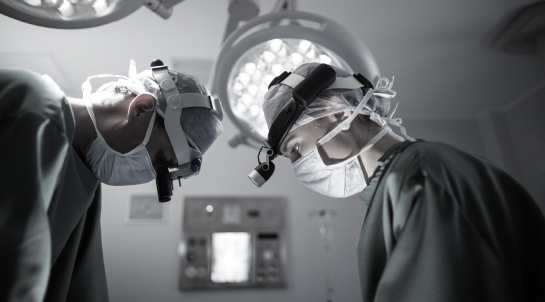


and prepared for surgery, including wearing a medical cap and shoe covers.
specialized for each operation, is assembled.
on the operating table and securely fixed.
performs necessary preparations, including vein puncture, monitoring electrodes, tonometer cuff, and oxygen sensor.
on the specific task, body part involved, and selected surgical tactics.
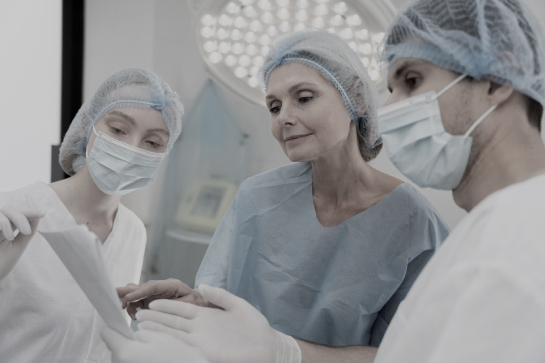






A craniofacial surgeon deals with the operative treatment of bone injuries, congenital tissue defects, inflammation, neoplasms, and other pathological conditions of the facial skull.
A maxillofacial surgeon treats pathologies of the bones of the facial skeleton, including congenital defects, acquired defects (cracks, fractures, other injuries), inflammatory diseases, neoplasms. A specialist can not only restore lost functionality due to a pathological condition but also recreate the appearance.
Injuries and diseases of the facial part of the skull are accompanied by symptoms that determine the need for consulting a craniofacial surgeon: bleeding from the ears, mouth, nose; uneven dilation of the pupils; headache, nausea, and vomiting; loss of consciousness; volumetric and purulent-inflammatory processes of the skull.
A maxillofacial surgeon should be consulted in cases of pronounced injuries to the face area, persistent pain (constant or during chewing, biting), local swelling, bleeding, bite disorders after injuries with no effect from orthodontic treatment. Jaw surgery may be performed in cases of complex issues. Maxillofacial surgery and maxillofacial traumatology deal with these cases.
“Head cancer” and “neck cancer” are not specific definitions, as tumors may be located in various places on the surface and inside the head, originating from different tissues, and having different rates and nature of growth, as well as additional properties. General symptoms for cancer include headache, nausea, and vomiting, impaired sensitivity and speech, general weakness, while local symptoms involve tissue deformation, volumetric formation in the body, organ dysfunction.
In cases of localization in the neck, tumors can cause a cosmetic defect, erosion, and ulcers, dysfunction of local organs, and are also accompanied by general symptoms of cancer affecting the whole body. General signs of malignancy in tumors involve the loss of functions in cells they performed before, uncontrollable growth and spread into surrounding tissues, as well as through lymph and blood throughout the body (metastases), and dysfunction of the source organ. Tumors in the head and neck are particularly dangerous due to their proximity to the brain, the damage to which can be life-threatening.
Craniofacial surgery, bone plasty of the face, repositioning of facial skull bones, and fixation using metal osteosynthesis are necessary in cases of skull injuries, especially those involving displacement, congenital defects, and acquired deformations of bones.
The guarantee for surgical treatment of the facial and neck areas applies to implants, medical consumables, and equipment. The provision of surgical treatment services is guaranteed in accordance with the modern achievements of medicine, the high level of qualification of the clinic’s specialists, and the technical equipment of the clinic. The final clinical effect is influenced by various factors, which depend not only on the doctor and the hospital but also on individual organism characteristics, lifestyle, environmental circumstances, stress factors.
Preparation for operations on the maxillofacial area includes a preliminary examination and consultation with a maxillofacial surgeon, a comprehensive examination, including photo and video analysis of appearance, anthropometry, and consultation with related specialists if necessary. The principles of preparation immediately before the operation do not significantly differ from those generally accepted in surgery.
Possible complications after craniofacial surgery include general surgical complications (bleeding, thrombosis, infectious-inflammatory conditions) as well as more specific complications (postoperative defects, non-union of bones, epileptic syndrome). Thorough preparation for the operation, highly qualified and experienced medical staff, modern high-tech equipment, and coordinated work of the medical team and other clinic staff help minimize the risk of complications.
Contraindications to facial surgery are conditions in which the severity critically increases the risks of surgical treatment, such as infectious diseases, mental disorders, gastrointestinal diseases.


